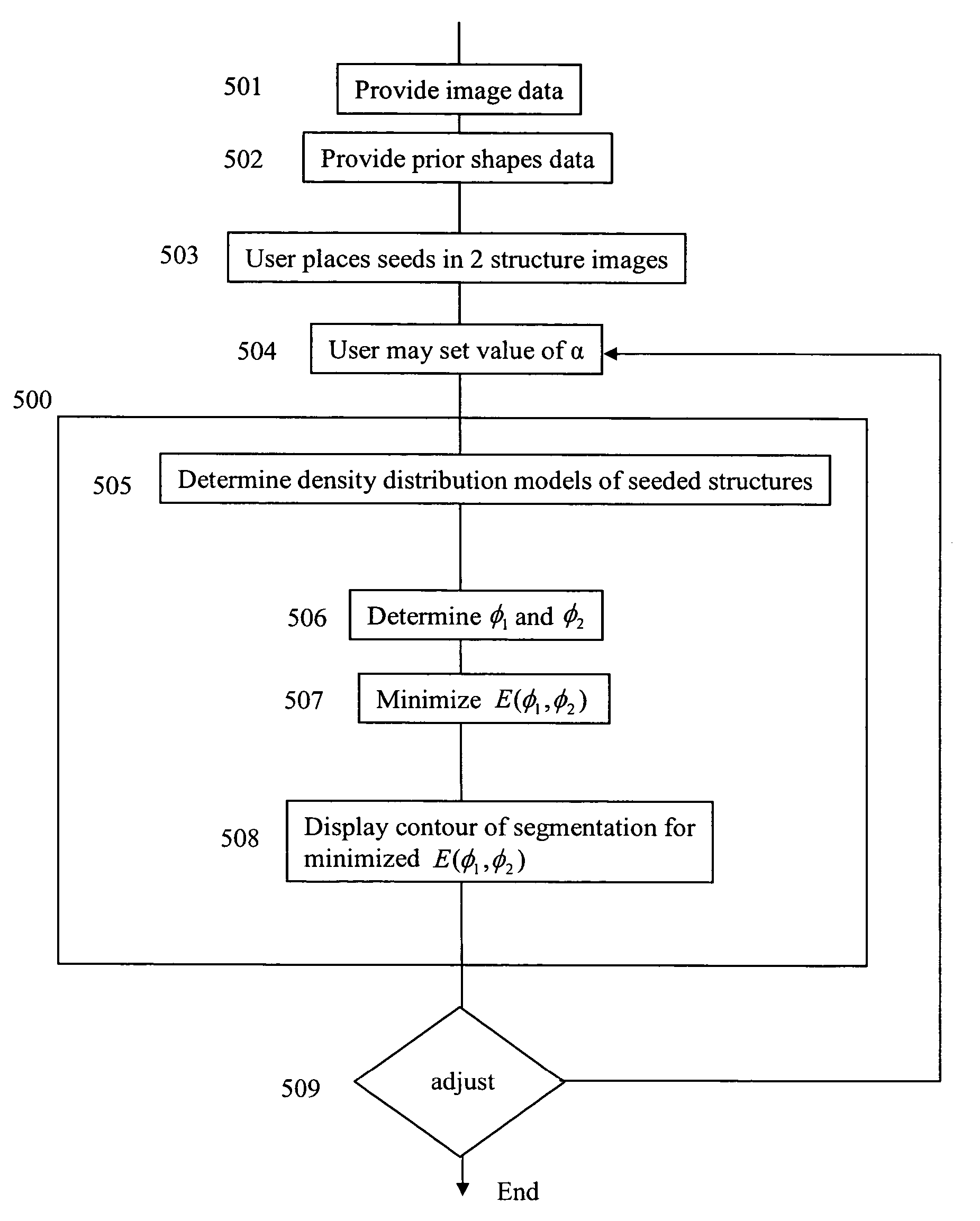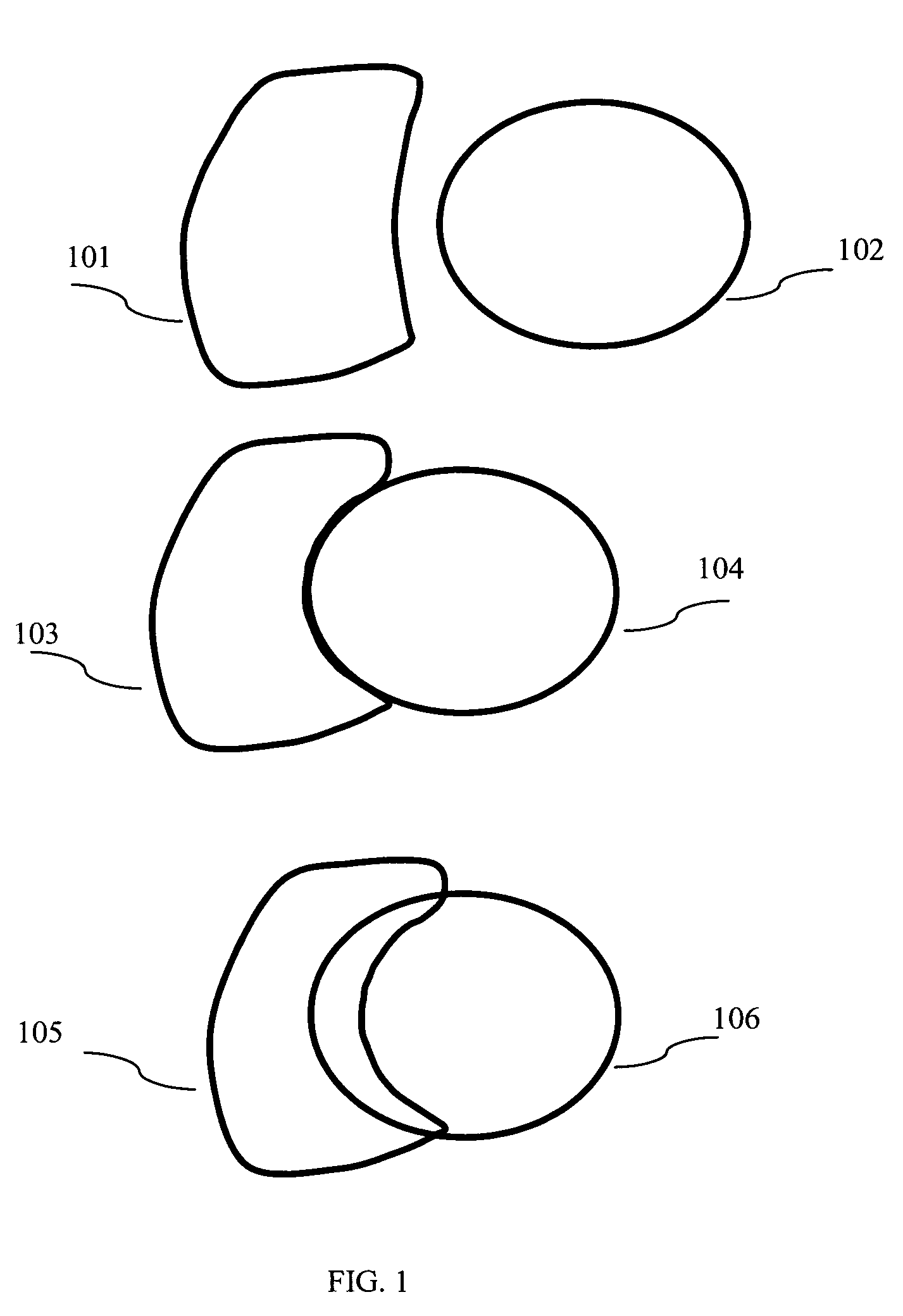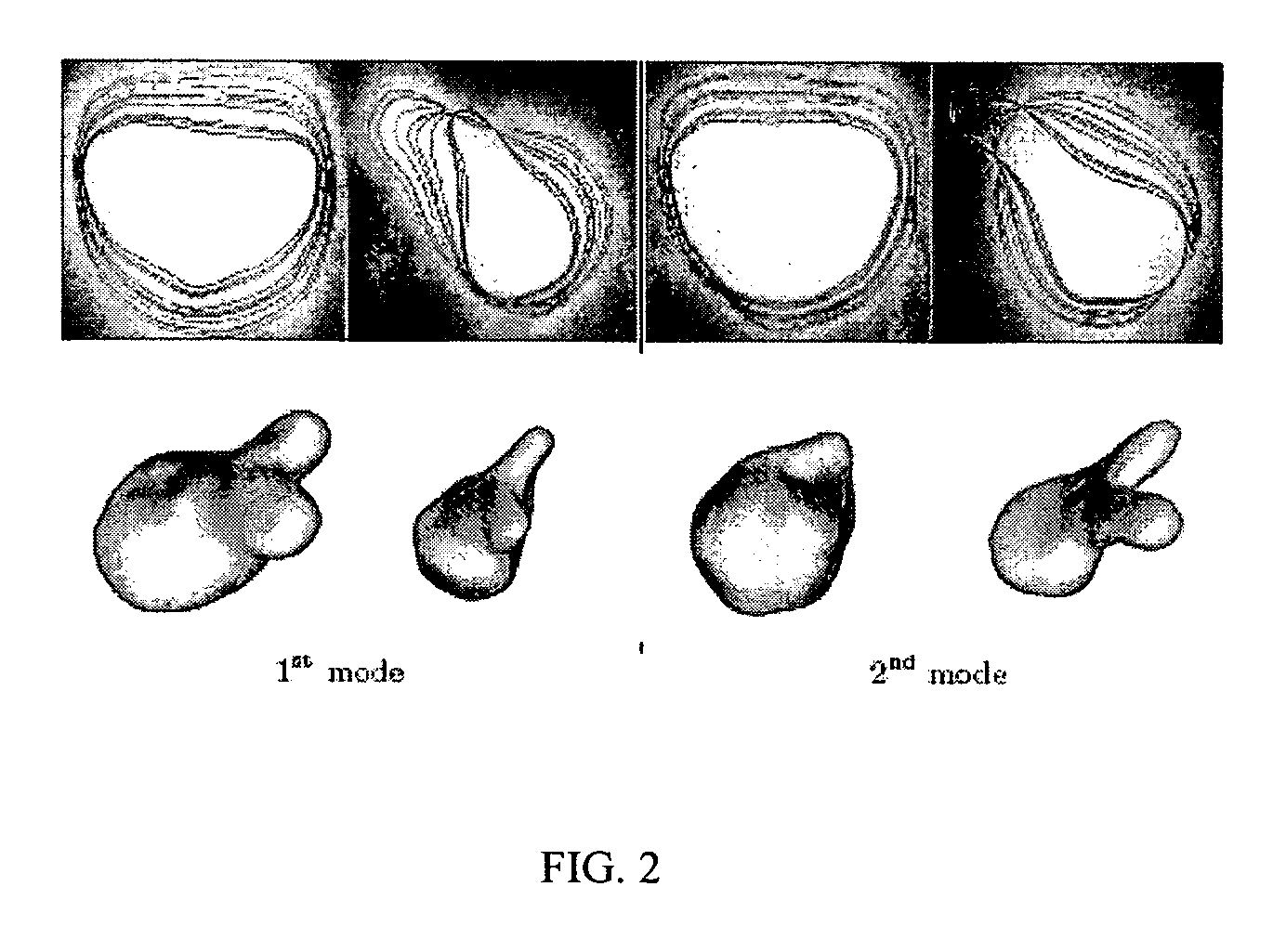Constrained surface evolutions for prostate and bladder segmentation in CT images
a surface evolution and segmentation technology, applied in image analysis, image enhancement, instruments, etc., can solve the problems of mainly changing the task is specifically more challenging, and the shape of the prostate is mainly changed, so as to achieve accurate and stable segmentation
- Summary
- Abstract
- Description
- Claims
- Application Information
AI Technical Summary
Benefits of technology
Problems solved by technology
Method used
Image
Examples
first embodiment
[0025] In a first embodiment H is the Heaviside function. The non-overlapping constraint can then be introduced by adding a penalty, when the voxels are inside both structures, i.e. when H(φ1) and H(φ2) are equal to one:
p(φ1,x,φ2,x)∝exp(−αH(φ1,x)H(φ2,x)) (7)
where α is a weight controlling the importance of this term. It will be shown in a next section, that α can be set once for all. The corresponding term in the energy is:
Ecoupling(φ1,φ2)=α∫ΩH(φ1,x)H(φ2,x)dx (8)
As a default value one may set α=10. If the segmented shapes still overlap one may increase the value of α.
[0026] Following recent works in, for instance the references T. Chan and L. Vese. Active contours without edges, IEEE Transactions on Image Processing, 10(2):266-277, February 2001 and N. Paragios and R. Deriche. Geodesic active regions: a new paradigm to deal with frame partition problems in computer vision. Journal of Visual Communication and Image Representation, Special Issue on Partial Differential Equations ...
second embodiment
[0028] In a second embodiment Hε is a regularized version of the Heaviside function defined as: Hɛ(ϕ)={1,ϕ>ɛ0,ϕ<-ɛ12(1+ϕɛ+1πsin(πϕɛ)),ϕ<ɛ.
[0029] As in the first embodiment the non-overlapping constraint can then be introduced by adding a penalty, when the voxels are inside both structures, i.e. when Hε(φ1) and Hε(φ2) are equal to one:
p(φ1,x,φ2,x)∝exp(−αHε(φ1,x)Hε(φ2,x)) (7a)
where α is a weight controlling the importance of this term. It will be shown in a next section that α can be set once for all. The corresponding term in the energy is:
Ecoupling(φ1,φ2)=α∫ΩH68 (φ1,x)Hε(φ2,x)dx (8a)
As in the earlier embodiment one may set a default value α=10. If the segmented shapes still overlap one may increase the value of 60 .
[0030] Again following earlier references, in the second embodiment, the image term in the energy expression will be defined by using region-based intensity models. Given the overlapping constraint, the level set functions φ1 and φ2 define three sub-reg...
PUM
 Login to View More
Login to View More Abstract
Description
Claims
Application Information
 Login to View More
Login to View More - R&D
- Intellectual Property
- Life Sciences
- Materials
- Tech Scout
- Unparalleled Data Quality
- Higher Quality Content
- 60% Fewer Hallucinations
Browse by: Latest US Patents, China's latest patents, Technical Efficacy Thesaurus, Application Domain, Technology Topic, Popular Technical Reports.
© 2025 PatSnap. All rights reserved.Legal|Privacy policy|Modern Slavery Act Transparency Statement|Sitemap|About US| Contact US: help@patsnap.com



